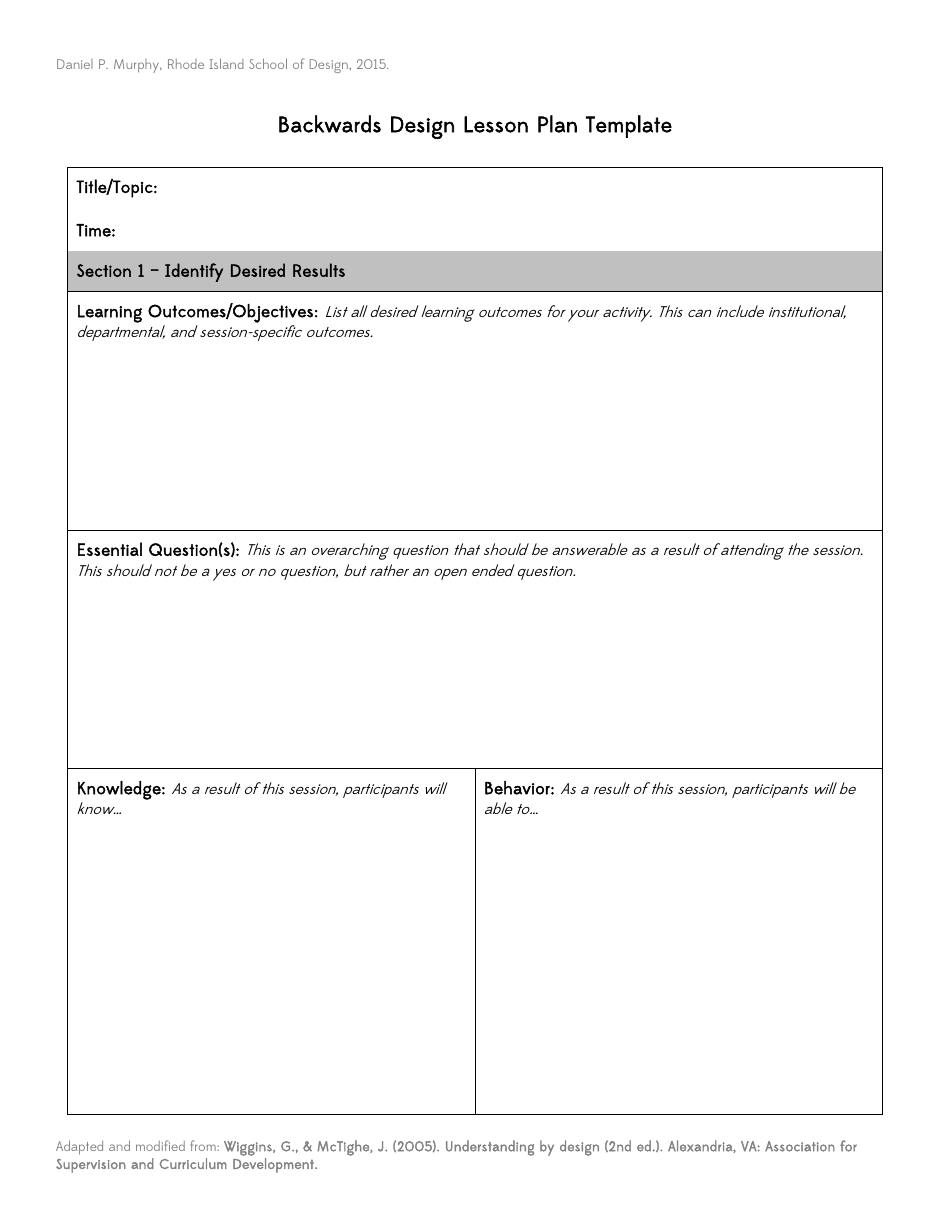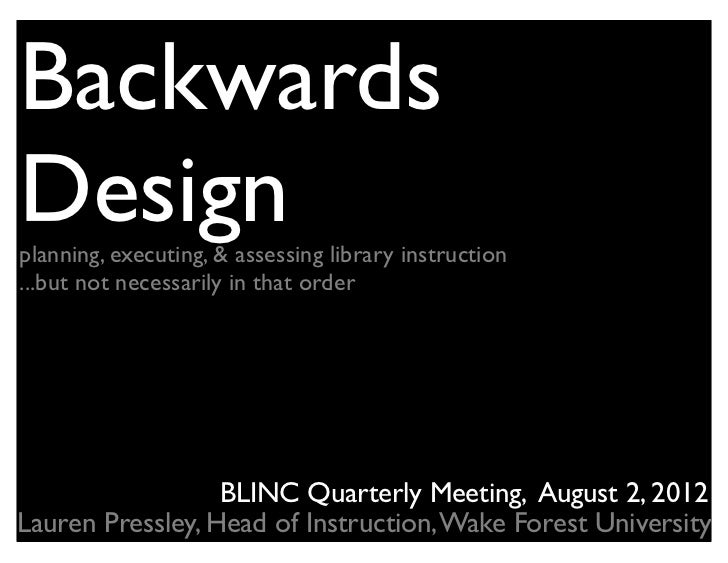Table Of Content

Using a process like backward design helps us get better at making these decisions. By making this approach part of our regular practice, we’ll be able to look back on a day, a week, or a year of teaching and say with a lot more certainty that when they were under our care, our students learned. This is a hard pill to swallow, because I wasn’t half bad as a teacher. I had decent relationships with my students and I believe most of them had good experiences in my classroom, but real, durable learning? And I got to drool over Matt Dillon in the movie’s opening scene again and again and again.
Teacher Standards and Accreditation
Gulla Jonsdottir is an Icelandic Architect creating unexpected and poetic modern designs from her eponymous Los Angeles-based design studio. Known for her sensual and dynamic forms that work harmoniously with their surroundings, Gulla’s environmental compassion brings unique spatial experiences. MI Design is a consortium of design professionals with project types focused on Interior Design.
Good Question: Why is George Washington looking the opposite way? - News10NBC
Good Question: Why is George Washington looking the opposite way?.
Posted: Mon, 02 May 2022 07:00:00 GMT [source]
Traditional Lesson Design
Michelle Ruben started her award-winning design firm in 2004 and quickly established herself as a front runner in high-end commercial and residential design in Los Angeles. On a mission to enrich people’s daily lives through exceptional design, bespoke details, and artistic solutions, Michelle Ruben is oh so one of the top interior designers in LA. With over a decade of experience, Olivia has had the joy of working on a wide range of award-winning projects, including residential, retail, office, and restaurant design.
JAC Interiors
Furthermore, the answers to question #3 regarding enduring understandings can be adapted to form concrete, specific learning goals for the students; thus, identifying the desired results that instructors want their students to achieve. As previously stated, backward design is beneficial to instructors because it innately encourages intentionality during the design process. It continually encourages the instructor to establish the purpose of doing something before implementing it into the curriculum. Therefore, backward design is an effective way of providing guidance for instruction and designing lessons, units, and courses. Once the learning goals, or desired results, have been identified, instructors will have an easier time developing assessments and instruction around grounded learning outcomes. Abackward design lesson plan can be an excellent way to improve your student outcomes and learning processes.
Aligning assessments & instruction

Each illustrating the boutique firm’s impressive commitment to architectural integrity, working within a broad range of design styles. In that case, make sure that you give your students plenty of time to write notes for your lessons so they can study them and answer you promptly and accurately come test day. We recognise the Ongoing Custodians of the lands and waterways where we work and live.
Step 3: Design Content for Instruction

Crafting realistic learning outcomes requires some understanding of students’ prior knowledge and skills in your subject. In Understanding by Design, Wiggins and McTighe argue that backward design is focused primarily on student learning and understanding. When teachers are designing lessons, units, or courses, they often focus on the activities and instruction rather than the outputs of the instruction. Therefore, it can be stated that teachers often focus more on teaching rather than learning.
Here's Why Jimi Hendrix's Backwards Stratocaster Was Awesome - Popular Mechanics
Here's Why Jimi Hendrix's Backwards Stratocaster Was Awesome.
Posted: Mon, 26 Oct 2015 07:00:00 GMT [source]
Backward's Design: Start with the Outcomes
They will never sit for a test and not know what the test is talking about or what he wants them to do. Unfortunately, this results in tests or assessments that don’t always reflect what the students did or learned. We’ve all experienced an unfortunate class or two where the test didn’t seem to reflect anything we had learned in lessons or course materials up until that point.
This model prioritizes knowledge and focuses on what is most important for students to understand and achieve. Arguably, if design begins with the end in mind, instruction is more likely to clearly focus on the identified desired results[3]. Furthermore, when a teacher designs a lesson without a plan for the final assessment, they may be tempted to add activities or units to the lesson just for the sake of filling class time. Students of all ages know when they are asked to do something pointless in class; they can spot “busy work” from a mile away, and will disengage as they see fit.
Successful lesson plans often contain a mix of instructional strategies and activities, since asking students to adapt to different modes of learning is an effective way to keep them engaged. Once you know the standards your students are expected to meet by a certain grade level, make a list of all the foundational knowledge they need to reach that goal. Using the ratio example, the teacher would need to ensure their students have a solid understanding of multi-digit multiplication, division, factors and multiples.
Today a thriving international, full-service interior design firm with a diverse and talented team. RVD creates award-winning design concepts for Five-Star luxury hotels and resorts, multifamily real estate projects, restaurants, and high-end residential projects worldwide. Unlike in backward lesson design, the assessment here is created after the lessons. Therefore, a teacher could risk omitting certain facets of the lessons from the final assessment, only acknowledging in hindsight that they probably could have saved valuable class time by skipping certain units or activities.
The second step establishes a definable target, an objective that you can measure. The next step is to determine appropriate assessments to demonstrate success with the objectives in place. The final step is where the educator decides which activities and teaching methods are best suited to achieving the learning goal.
If we don’t plan learning experiences that make that possible, we’re giving them a sub-par education. I was first introduced to this concept in my sixth year of teaching, and the genius of it completely blew me away. I used it when planning my next unit and experienced the biggest spike in student success I’d ever seen. On top of that, I was actually excited about teaching the lessons I had planned. For the first time, it felt like none of my class was wasted; everything actually mattered.
Both the Dick and Carey model and the backward design model are goal and objective oriented; assessment is created based on learning objectives and goals, and instruction is created based on evaluation and assessment. The Dick and Carey model, however, is a more systemic model in that making changes to components affects other components and, therefore, the changes occur in parallel. In the more linear backward design model, the steps are non-flexible which means that skipping or changing steps is not an option. Another important aspect of backwards design is that it helps ensure your assessment is authentic. All authentic assessment starts with alignment to intended learning outcomes.
In this article, the author explains the concept of ‘Understanding by Design’ and how that applies to teaching and learning. The first and most important problem is a lack of durable, transferable learning. One reason so many of us don’t remember much of what we learned in school is that we learned it through this haphazard, topic-driven approach. These random activities are taking up precious time that could be spent on much more valuable stuff. This knowledge is considered knowledge worth being familiar with.

No comments:
Post a Comment